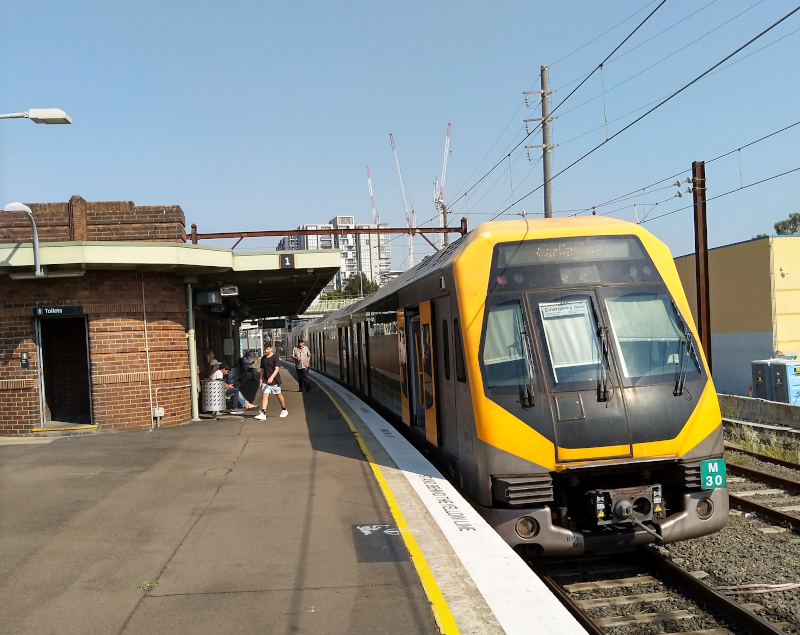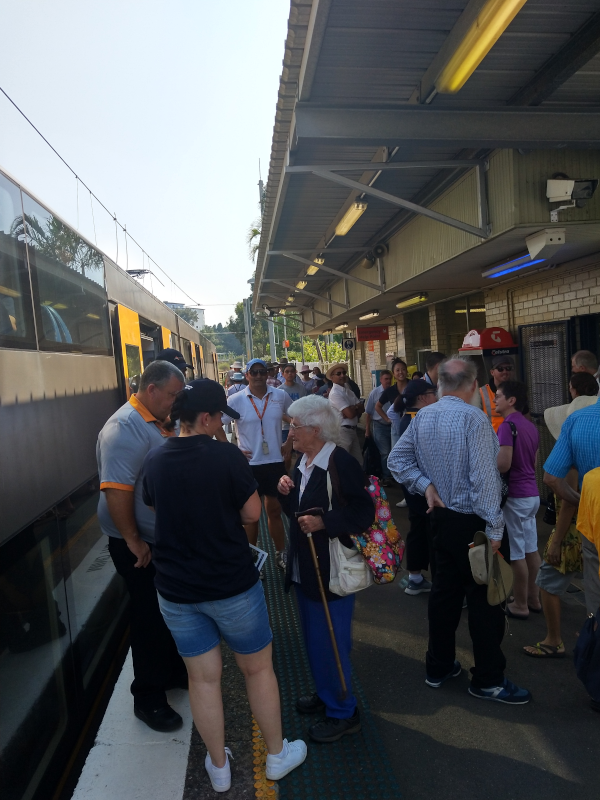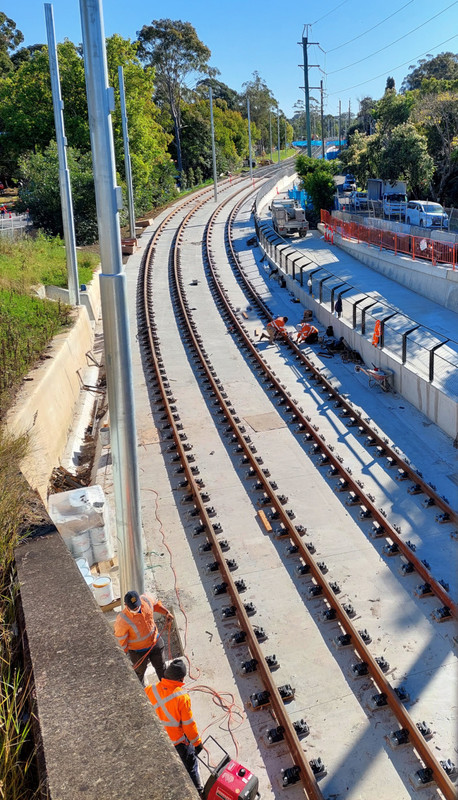Today, Sat Jan 4th 2020, is the last day of operation for this little known line in Sydney's north west. The line runs from Clyde, the junction with the main western commuter line, up "the hill" to Carlingford, a distance of just over 7kms to the north with 7 stations. It was my local line with my residence a short walk from the second last station, Telopea. However in recent years I seldom used it for the reasons described below. From 2023 the line will become part of the Parramatta Light Rail (or tramway) running between Carlingford and Westmead via Parramatta.
When originally opened it was a rural line carrying produce from the many market gardens in the area to the Sydney markets. It also served the Rosehill Racecourse, the first station after Clyde, and that section of the line will be retained. Plans to extend the line further north from Carlingford never eventuated. It continued in this rural role, with some passenger services, until the 1950s when the market gardens started to disappear and were replaced with housing developments as Sydneys suburban boundaries spread further outwards. Some industrial freight and produce services continued to run until the 1980s.
It was the last Sydney line to run steam passenger services and was using kerosene powered signal lights until 1992.
From the 1990s onwards the housing developments started to be replaced by high rise apartment blocks, particularly at Carlingford and to a lesser extent at other stations. While this should have been a boost to passenger numbers, the line had some serious drawbacks as a viable commuter service. Its steep grades, the steepest in the Sydney commuter network, meant that many of the types of commuter trains used in Sydney could not operate on the line. The fact that it was a single line with no passing loops for nearly all of its 7km length severly restricted its running timetable - theoretically two trains an hour were possible but more realistically one train ran every 45-50 minutes which made memorising the timetable impossible. Finally, apart from the junction station at Clyde, all its platforms were short and were only able to accomodate trains of up to 4 cars in length. During all of its history, passenger services consisted of a shuttle train running between Carlingford and Clyde where passengers had to change for other commuter destinations.
The demographics of the area have also changed. Most locals now travel to and from the commercial, education and retail centre at nearby Parramatta which has a far better commuter service, so they abandoned the line in favour of their cars or the many direct bus connections that are available. Changing trains at Clyde and the infrequent services meant that the line was not an attractive option. As a result, it had the lowest passenger patronage figures of any Sydney commuter line. Hence the decision to build a new light rail connection to Carlingford that would better serve the commuters needs and save a lot of money by using most of the existing heavy rail corridor.
From tomorrow the Carlingford Line will be replaced by an all stations bus service between Carlingford and Parramatta (except Clyde). The off-peak bus timetable gives commuters a service every 15-20 minutes and a peak hour service every 6 minutes - times that the train service could never match. This will continue until 2023 when the new light rail service opens - but the Government's record of delivering light rail lines on time and within budget is woeful, to say the least.
Millennium Set M30 waits at Clyde station for the next shuttle service to Carlingford on the last day of operations for that line.

At Carlingford, more people and well wishers were on the platform than at most other times in its history. The final run will be at 01:15 the following morning.

When originally opened it was a rural line carrying produce from the many market gardens in the area to the Sydney markets. It also served the Rosehill Racecourse, the first station after Clyde, and that section of the line will be retained. Plans to extend the line further north from Carlingford never eventuated. It continued in this rural role, with some passenger services, until the 1950s when the market gardens started to disappear and were replaced with housing developments as Sydneys suburban boundaries spread further outwards. Some industrial freight and produce services continued to run until the 1980s.
It was the last Sydney line to run steam passenger services and was using kerosene powered signal lights until 1992.
From the 1990s onwards the housing developments started to be replaced by high rise apartment blocks, particularly at Carlingford and to a lesser extent at other stations. While this should have been a boost to passenger numbers, the line had some serious drawbacks as a viable commuter service. Its steep grades, the steepest in the Sydney commuter network, meant that many of the types of commuter trains used in Sydney could not operate on the line. The fact that it was a single line with no passing loops for nearly all of its 7km length severly restricted its running timetable - theoretically two trains an hour were possible but more realistically one train ran every 45-50 minutes which made memorising the timetable impossible. Finally, apart from the junction station at Clyde, all its platforms were short and were only able to accomodate trains of up to 4 cars in length. During all of its history, passenger services consisted of a shuttle train running between Carlingford and Clyde where passengers had to change for other commuter destinations.
The demographics of the area have also changed. Most locals now travel to and from the commercial, education and retail centre at nearby Parramatta which has a far better commuter service, so they abandoned the line in favour of their cars or the many direct bus connections that are available. Changing trains at Clyde and the infrequent services meant that the line was not an attractive option. As a result, it had the lowest passenger patronage figures of any Sydney commuter line. Hence the decision to build a new light rail connection to Carlingford that would better serve the commuters needs and save a lot of money by using most of the existing heavy rail corridor.
From tomorrow the Carlingford Line will be replaced by an all stations bus service between Carlingford and Parramatta (except Clyde). The off-peak bus timetable gives commuters a service every 15-20 minutes and a peak hour service every 6 minutes - times that the train service could never match. This will continue until 2023 when the new light rail service opens - but the Government's record of delivering light rail lines on time and within budget is woeful, to say the least.
Millennium Set M30 waits at Clyde station for the next shuttle service to Carlingford on the last day of operations for that line.

At Carlingford, more people and well wishers were on the platform than at most other times in its history. The final run will be at 01:15 the following morning.



